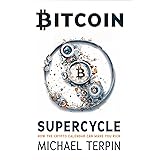The cryptocurrency market, often characterized by its dynamic shifts and pronounced volatility, continues to mature, drawing an increasing amount of institutional interest. As explored in the accompanying video, the narrative frequently revolves around industry titans like Bitcoin and Ethereum. However, discerning investors understand that the true potential for disproportionate growth often lies within quality altcoins that are strategically positioned for significant breakthroughs. The current market juncture, marked by robust institutional adoption and technological advancements, presents a compelling landscape for assets beyond the immediate top tier.
Recent market movements underscore this evolving landscape. Despite transient dips that might “shake out” less seasoned retail investors, a pattern of higher lows has been established. This resilience, particularly evident in Bitcoin’s performance, suggests a foundational strength that often precedes broader market rallies. Institutional players, with their substantial capital and long-term outlook, are increasingly entering the fray, signaling a shift from speculative trading to strategic, long-term investment in digital assets.
The Foundational Resilience of Bitcoin: Digital Gold 2.0
While the focus often gravitates towards altcoins, Bitcoin’s role as the market’s bedrock cannot be overstated. Its consistent performance and growing acceptance as “digital gold” provide a crucial anchor for the entire crypto ecosystem. As noted by industry leaders like Michael Saylor, the narrative surrounding Bitcoin has solidified: it is a primary monetary crypto, against which credit can be issued, echoing the traditional utility of gold. The consensus that Bitcoin represents a superior, digital alternative to traditional gold is a powerful catalyst for its continued valuation increases.
The institutional embrace of Bitcoin has been particularly impactful. The launch of Bitcoin ETFs in January 2024 marked a pivotal moment, opening regulated pathways for vast pools of institutional capital. This influx, coupled with ongoing corporate treasury acquisitions, has demonstrably absorbed the natural supply from miners, exerting consistent upward pressure on its price. Indeed, Bitcoin’s price has been observed to triple following such significant institutional integrations. This corporate adoption, as highlighted by Saylor, signifies a profound maturation of the asset class, moving beyond individual investor speculation to strategic allocation by major financial entities. Historically, Bitcoin has also shown a tendency to sell off before traditional stocks and rally ahead of them, indicating its evolving position as a leading economic indicator within a digitally transforming global economy.
Ethereum’s Enduring Gravitas and the Tokenization Horizon
Ethereum, the second-largest cryptocurrency by market capitalization, continues to demonstrate its critical role in the evolution of Web3 and decentralized finance (DeFi). While Bitcoin serves as digital gold, Ethereum is emerging as the preeminent network for digital finance. Its robust ecosystem supports a myriad of use cases, from decentralized applications (dApps) to non-fungible tokens (NFTs) and, crucially, the burgeoning field of tokenization. This network is architected to circulate and tokenize stablecoins, currencies, securities, and real-world assets, forming the backbone for a future where virtually all financial instruments reside on blockchain rails.
The excitement surrounding Ethereum’s potential for tokenization is palpable. Institutional interest, as evidenced by the turnaround in ETF flow in April (likely 2024), suggests that major players are recognizing Ethereum’s indispensable position. Prominent figures like Tom Lee launching Ethereum DATs further amplify this sentiment. The network’s continuous development, including anticipated upgrades that enhance its scalability and efficiency, reinforces its appeal. These factors collectively indicate that Ethereum is not just holding its ground but is actively expanding its domain, with its price also tripling in response to these fundamental shifts and growing institutional enthusiasm.
Solana’s Ascendant Trajectory: The Architecture of “The New Wall Street”
Amidst the established dominance of Bitcoin and Ethereum, Solana has rapidly emerged as a formidable contender, garnering significant attention as a potential “new Wall Street.” While often discussed in the same breath as its larger counterparts, Solana’s market capitalization of approximately $100 billion renders it significantly smaller – merely 1/25th the size of Bitcoin ($2.5 trillion) and 1/5th the size of Ethereum. This disparity, as emphasized by Bitwise CEO Matt Hougan, presents a unique opportunity for amplified returns from institutional inflows.
Solana’s design philosophy explicitly targets high throughput and low transaction costs, making it uniquely suited for institutional-grade tokenization. Unlike Ethereum, which is designed for a broad array of use cases, Solana’s architecture is tailored to facilitate the movement of traditional financial assets like stocks, bonds, and mutual funds onto blockchain rails. This strategic focus positions Solana to compete directly in the massive market of financial asset digitization. The widespread expectation of multiple Solana ETPs launching in the near term, coupled with its strong technical story, including upgrades like Alpen Glow, underscores its readiness for this role.
Leading figures like SEC Chairman Paul Atkins and BlackRock CEO Larry Fink have articulated a vision where all financial assets will eventually transition to blockchain-based rails. This monumental shift, moving away from centuries-old traditional systems, demands a blockchain infrastructure capable of handling immense transaction volumes with efficiency and reliability. Solana’s core design appears to align perfectly with this requirement, offering a highly scalable and cost-effective solution for this next generation of financial markets. The backing of influential figures and large DATs, combined with its relatively smaller market cap, suggests an extraordinarily strong outlook for Solana season.
The Mechanics of Market Amplification: Why Size Matters
The concept of market capitalization plays a critical role in understanding potential investment returns. As Matt Hougan cogently explains, an asset like Solana, being 1/25th the size of Bitcoin and 1/5th the size of Ethereum, experiences an amplified effect from capital inflows. A purchase that might barely move the needle for a multi-trillion-dollar asset can trigger significant price appreciation for a smaller, yet fundamentally strong, blockchain. This principle is a key driver for “altcoin season,” where capital rotation from larger assets or new institutional funds seeking high-growth opportunities flows into more agile, high-potential projects.
Consider the impact of a $1 billion inflow. For Bitcoin, a $2.5 trillion asset, this represents a mere 0.04% increase in market cap, which might not cause a dramatic price shift. For Solana, however, a $1 billion inflow into its $100 billion market cap equates to a 1% increase, potentially leading to a much more pronounced price movement. This mathematical reality underscores why assets like Solana are so attractive during periods of increasing institutional adoption and market expansion. The prospect of multiple Solana ETPs and corporate treasuries buying into a relatively smaller market means these purchases could yield outsized returns for early investors.
Beyond Hype: Fundamental Drivers for Altcoin Growth
The enthusiasm surrounding the future of quality altcoins like Ethereum and Solana is not merely speculative hype; it’s rooted in fundamental shifts in technology, finance, and regulation. The vision of all financial assets migrating onto blockchain rails is being articulated by the most influential voices in traditional finance. This paradigm shift will require robust, scalable, and secure blockchain networks, and both Ethereum and Solana are at the forefront of this evolution.
Ethereum, with its established network effect and ongoing developments in DeFi and broader tokenization, is set to continue its ascent. Solana, by specifically architecting itself to serve as the infrastructure for “the new Wall Street,” offers a highly compelling value proposition for institutional adoption. The competition between these networks will undoubtedly drive innovation, benefiting the entire ecosystem. Moreover, the broader “raging bull market” on the horizon, as anticipated by market strategists, suggests that the growth seen in recent months is just the precursor to a much larger cycle. Investors are recognizing that Bitcoin and crypto are here to stay, and the world is slowly waking up to the transformative potential of these digital assets.







